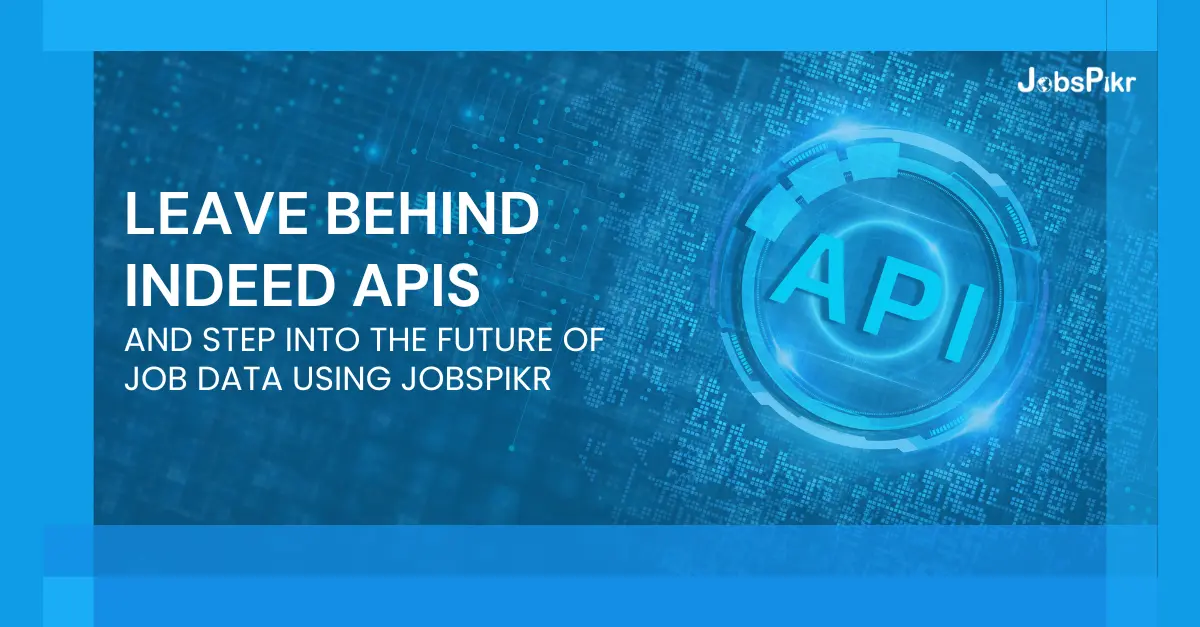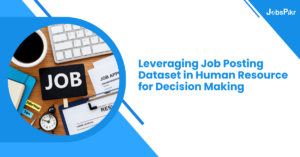For a while, individuals had limited options for fetching job data. Job APIs were commonly offered by Job Websites and came with a multitude of caveats. Indeed’s Get Jobs API required developers to sign up for a Developer account, get an API key, and then make separate HTTP calls with the required parameters.
Some of the issues faced with such APIs offered by Job Industry behemoths are as follows-
Rate Limiting: Almost all Job APIs in the market come with some sort of rate limit. You can ask for a higher limit but would have to pay for it in return. These limits can be set across multiple metrics such as Mbs of data queried, the number of job listings fetched in a set period, and more. Such limitations can impact your expansion plans as you try to consume data from more sectors or regions.
High Costs: Job APIs often come with separate plans for commercial and personal usage. Commercial plans may offer a few more features and higher limits but can end up being a lot more expensive as well. Given that a part of the cost can also be variable, you will need to keep track of your usage so that you do not end up with a surprisingly high bill at the end of the month.
Restrictions on end data usage: Some companies may also have certain restrictions on how you can use the scraped data. Some may not allow you to use the data commercially or may have limitations on using the data for recruitment purposes. You will have to read the fine print and comply with the same. Even if your business goals change, and you want to explore newer avenues and put the data at your hand to maximum usage, you may be bound to your signed contract.
One-sided communications: Job Websites like Indeed offer you an out-of-the-box Job Fetch API solution. The API contract and response format is shared with developers and that’s where the word ends. There’s little chance of you being able to inform the API provider of any bug in the system if a feature is not working as expected or even if there’s an issue in the data.
No Customization: Given that Job Data APIs are created for the masses, the companies hosting them usually create a very generic solution that would be “fine” for all, but not “great” for anyone. This would mean that almost everyone using the APIs would have further actions added downstream to clean the data, format it, add tags, and save it in correct databases or data storage solutions.
Data Availability: At no point in time are you guaranteed data completeness and the company behind the API can very well choose to keep some premium or top job listings all for itself. On top of this, there can also be data lags, data misses, or even stale data. Companies can also share only a few of the available data points via API. Low data accuracy or confidence can highly impact your actual goal.
Single Point of Failure: Basing your entire business on a single API offered by a company is a definite path to failure. The company has no obligation to keep the API running 24×7 and can also change the API contract or how it behaves at any point in time. Just like Indeed, the company can also choose to deprecate certain APIs or stop onboarding new users.
Limited Historical Data: Most of the job data APIs offer the latest job postings only. Very few cover historical data. Even for the ones that do, they usually have a hot data zone that they cover- the last 3 or 6 months of data. Getting older data in a specific format may be difficult and you may need to contact and negotiate with the company in charge separately.
Data Integration- APIs vs DaaS
Apart from the usual problems faced when using a job API, the integration itself takes time, and companies without a tech team may face difficulty in getting the task done. For instance, using the Indeed API involves the following:
- You will need to set the correct endpoint in your system. For Indeed job fetch, that would be– https://api.indeed.com/ads/apisearch
- When calling the API, you would have to pass the correct request parameters so that the result of the API gives you the data that you need. For instance, if you were looking for graphics designer jobs in San Francisco, your query params would have to be appended to the API somewhat like this–https://api.indeed.com/ads/apisearch?publisher=your_api_key&query=graphics+designer&location=San+Francisco
- The API key that you see in the API is used for authentication- just like a password. It ensures that only you can access the data. You will need to keep the key safe and send it with every API call that you make.
- The response of your API call will always be a JSON and you will need to convert the JSON and save it based on your use case. The JSON may look somewhat like this– { “results”: [ { “job title”: “Graphics Designed”, “company”: “Z ArtWorks”, “location”: “San Francisco, CA”}… ] }
Instead, if you choose to use a DaaS provider like JobsPikr, you would need to go through a much simpler process for which you’d need no technical know-how.
- Access the self-serve portal and set your requirements there. These can be the regions for which you want job data, skills that need to be present, or keywords that you want to match. The filter will cover job posts across boards and company pages to provide you with a custom job stream.
- Once you have set your custom requirement, you will be shown a sample results page. You can validate the postings that you receive as well as the data points.
- Once you are satisfied with the results, you can set up the data flow to your system. Once this is done, you can access the data via JobsPikr’s self-serve portal. You can also choose to integrate via Dropbox, S3, Google Drive, FTP or APIs.
The Future of Job Data
Job Data APIs are the past and the longer you keep using them, the more data would be left on the table for your competitors to gain an edge. DaaS providers like JobsPikr provide you with a custom job data stream that you can further filter based on location, sector, job roles, and more.
Different data formats, storage formats, and integration mediums are available. Given that we have over 100+ clients globally, we support almost every integration possible and also offer job data tools to solve common problems such as salary benchmarking, skill gap analysis, market trend analysis, and more.
We also provide solutions for those who do not want to interact with or consume the raw data directly. This is done via smart dashboards that assist in building hiring strategies or observing hiring trends among competitors.




